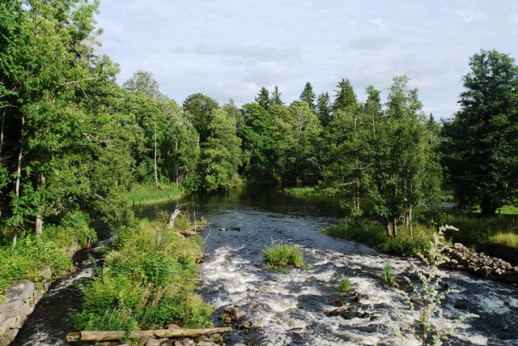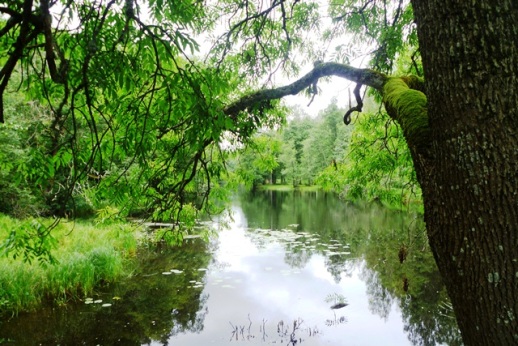
Words and pictures by Paul Scraton
Our house is part of the Järle Gård, a collection of farm buildings located on a slight rise above the road bridge that crossed the southern end of the Järleån nature reserve in central Sweden. From the house it is not possible to see the river, although it is there, just amongst the trees at the bottom of the field. You can hear it though, the water rushing through the mill dam that marks the end of the reserve.
The Järleån river runs through the south of the Bergslagen, a mining district to the north of Örebro and Lake Mälaren. As you arrive in the region you would not necessarily guess at the industrial history of the place, of the mines and the ironworks and the dynamite factories that helped make Alfred Nöbel his fortune. But once you spend some time here you realise the tales that can be found between the dense forests, rolling rivers and picturesque lakes. Nature reserves that look unspoiled, as if untouched since the ice retreated turn out to have been shaped by the mines, a landscape dug and scraped, the waterways redirected and lakes created. An English expat, whose house sits atop Sweden’s deepest mine, is here working in the industry, and he tells us of discovering abandoned machinery down the bottom of the garden from when they closed that particular mine back in the 1970s.

But if the region has found its fortune in the earth, it is the water that gives it beauty. Tourist brochures talk of thousands of lakes, and a brief glance at the map shows that it must surely be true. The council provides not only detailed maps of the Bergslagen trail – a 200-odd kilometre walking route through the heart of the region – but also free kayaking guides for those who want to explore the waterways. Sweden’s famous right to roam, which includes crossing and camping on private property, includes its rivers and lakes, and old charcoal burner’s huts and stone fireplaces have been maintained for those who want to explore the landscape by foot or paddle and wish to sleep and cook along the way.
There are exceptions though, and the six kilometre stretch up river from our little yellow house at Järle Gård is one of them. Here the Järleån is protected, because of the plant and birdlife, including unusual plants such as mezereon, common toothwort, lungwort and field horsetail, although walkers can still follow the course of the river along a marked track on the southern bank. The fact that this stretch also coincides with the Långforsen rapids, the largest fall along the entire river length, must add to the frustration of those white water lovers for whom the potential thrills are forbidden and thus can only be imagined. Instead they have to proceed on land, down to the old mill by our house, where they can once again take to the water.
At some point in the seventeenth century there was a plan to build a town here, called Jerle Stadh, and a town charter was signed. They had the piece of paper, but economic circumstances meant the town was never built. At some point the authorities made administrative changes but somehow they forgot about this particular charter and so the town remains. Which means for these two weeks we have been residents of the smallest town in Sweden, adding more than ten percent to its permanent population of thirty souls that call the Järleån their home.